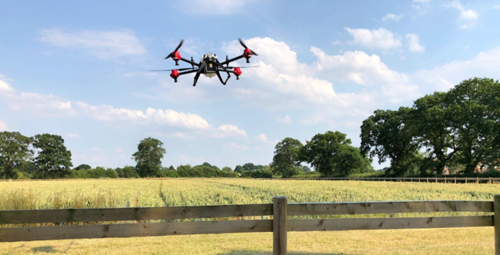The Internet of Things (IoT) has found a valuable application in agriculture, where it is transforming traditional farming practices into digitally connected and data-driven operations. In this article, we will explore the role of IoT in modern agriculture and its potential impact.
IoT in Agriculture:
IoT in agriculture involves the deployment of sensors, devices, and connectivity solutions across farms to collect and transmit data. These data are then analyzed and used to make informed decisions and optimize various aspects of farming.
Key Applications of IoT in Agriculture:
-
Precision Agriculture: IoT sensors monitor soil moisture, temperature, and nutrient levels, allowing farmers to make precise decisions about irrigation, fertilization, and pest control. This reduces resource wastage and enhances crop yields.
-
Livestock Monitoring: IoT-enabled devices track the health and behavior of livestock. Farmers can receive real-time alerts about animal health issues, improving animal welfare and productivity.
-
Weather Monitoring: IoT weather stations provide localized weather data, helping farmers anticipate and respond to weather-related challenges such as storms or frost.
-
Crop Health: Drones equipped with sensors and cameras can assess crop health, identify diseases or pests, and even perform precision spraying or planting.
-
Equipment Management: IoT sensors on farm machinery monitor equipment health, usage, and performance. Predictive maintenance based on IoT data minimizes downtime and repair costs.
Benefits of IoT in Agriculture:
-
Increased Efficiency: IoT enables real-time monitoring and automation, reducing the need for manual labor and optimizing resource use.
-
Enhanced Productivity: IoT-driven insights lead to higher crop yields, healthier livestock, and better overall farm performance.
-
Resource Conservation: Precise resource management reduces water and fertilizer usage and minimizes environmental impact.
-
Risk Mitigation: IoT data helps farmers anticipate and respond to weather events, disease outbreaks, and equipment failures.
-
Data-Driven Decisions: Farmers can make informed decisions based on real-time data, improving farm management.
Challenges and Considerations:
Despite its potential, IoT in agriculture faces challenges such as data privacy concerns, initial setup costs, and the need for reliable connectivity in remote farming areas. Additionally, ensuring the security of IoT devices and data is crucial.
In conclusion, IoT is transforming agriculture by connecting farms to a network of sensors and devices, enabling data-driven decision-making, and improving resource efficiency. As technology continues to advance and become more accessible, IoT is set to play an even more significant role in the future of farming.


没有reply内容